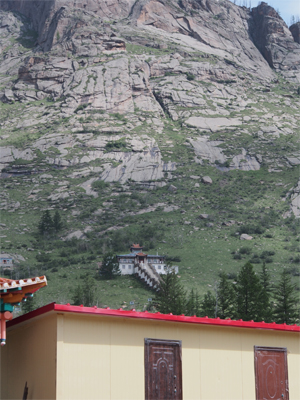
Aryabal Meditation Center
|

Swing bridge up the the Center |
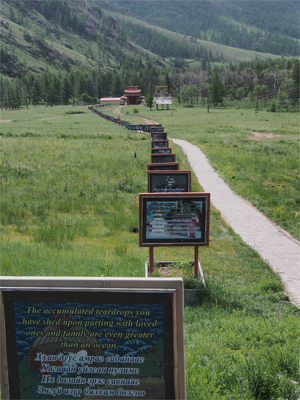
Pathway or Buddhist teachings
|

Marge's number |
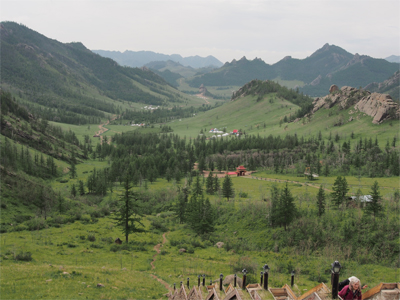
View of the valley from the meditation center |

Mongolian soyombo in wrought iron
|

Words of the mantra painted on the rocks
|
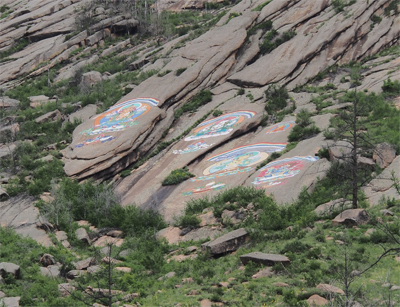
Paintings of three gods |
Inside of the Buddhist Temple
|
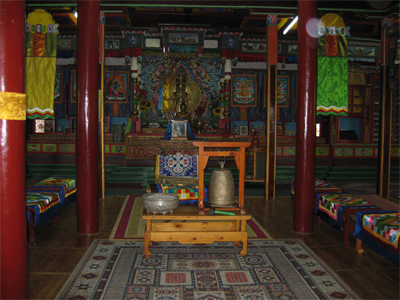
|

|

|
After lunch at our camp we helped/watched how the gers are erected. First a floor is made and then five lattice sections are stretched out and joined to form the circular walls. The roof ring is tied to two posts and lifted up in the center. From outside, 88 poles are placed from the lattice to the roof ring. A door frame is positioned facing south. Next, sheep wool felt is wrapped around the sides and held in place with a long sash like a belt. Two sections of felt go over the poles as a roof. A waterproof material is wrapped outside the felt and the ger is complete. This is all collapsed and transported and rebuilt at the winter home and then the summer home of the nomads. It takes a man and his wife about three hours to reconstruct their dwelling.
Next the camp staff dressed us in Mongolian outfits for pictures. My robe was very comfortable. The tight sash the men wear supposedly protects their kidneys when riding their horses.
Another surprise was that we got to try some archery. None of us hit the target. (Someone is supposed to send me pictures of this event - to be added later.) |
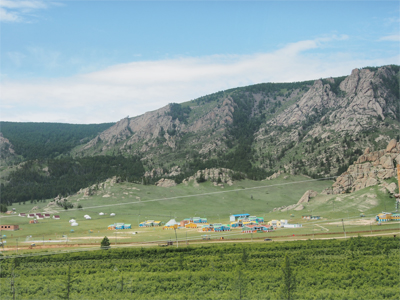
Camp for orphans
|

Another view of clouds and landscape from our front porch |
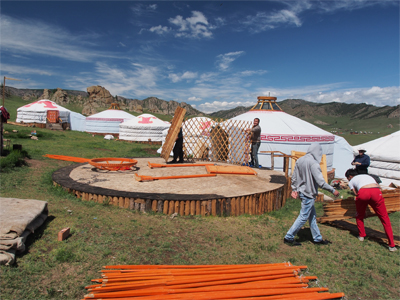
Ger building - platform and lattice
|
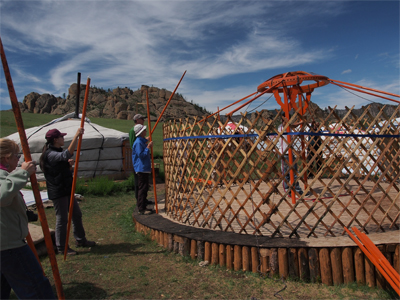
Erecting the roof ring and center poles |

Placing the 88 "ribs" for the roof
|
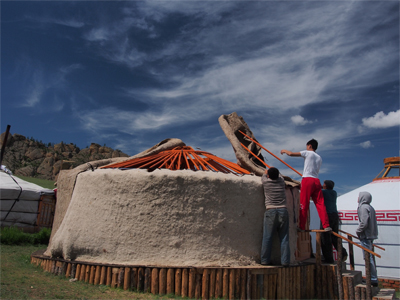
Adding the felt |
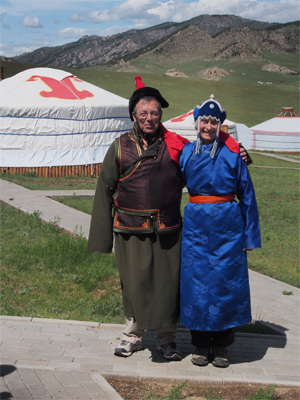
Bob and Gale in traditional costumes called dels
|
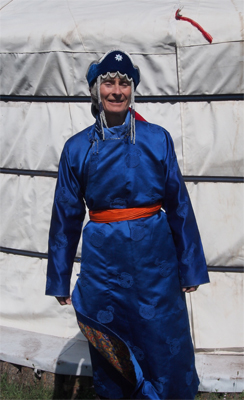
Gale in traditional costume - a del |
After ger building, we went to visit a nomad's family ger where they herd 100 sheep, 100 goats, 80 cows, 6 horses, and some yaks. The wife makes milk tea, yogurt, curd cheese, and wheel cheese. The woman went through the processes while we watched and tasted the things she made. People come to her to buy her cheese and yogurt.
|
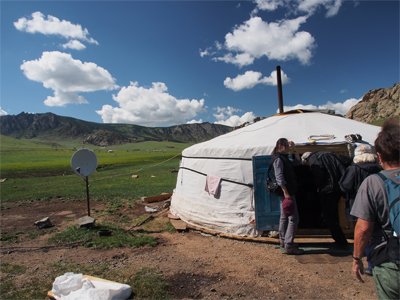
Ger of the cheese making group, complete with satellite TV dish |
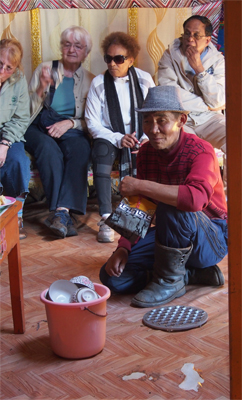
The herder and the bowls used to serve us the milk tea
|

Heating the milk to make the cheese
|
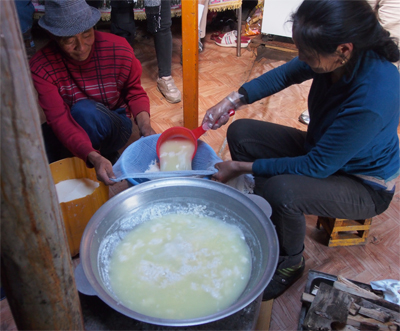
Ladling curd from milk |

Squeezing and straining milk from curd
|
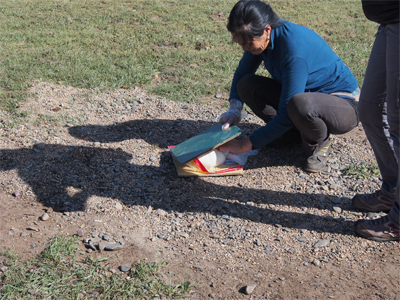
Pressing cheese into cheese wheel |

Pressing cheese into cheese wheel
|
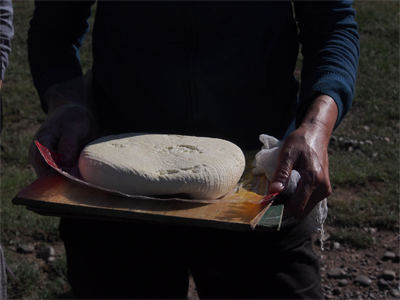
Finished cheese wheel - ready to be dried |
When it was time to milk the cows she showed us how and several of us gave it a try. We all got milk to come out but not very efficiently. I have always wanted to milk a cow!
|
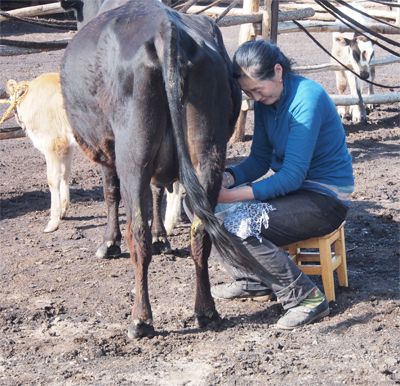
Milking the cow
|
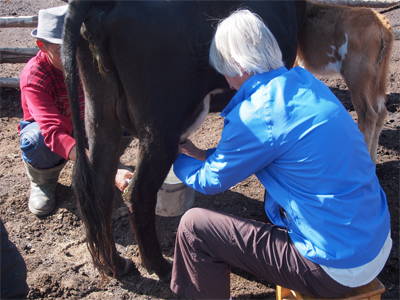
Gale trying her hand at milking |
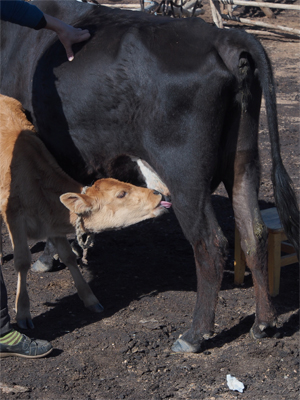
Finally, my turn!
|
Thurs., 6/27/13 - Gorkhi-Terelj National Park to Ulaanbaatar
Today we packed up and left our ger camp in Gorkhi-Terelj Nat'l Park and headed back to UB for one night to get cleaned up and repacked for the next more primitive camp. We will miss the modern bathroom attached to this ger. On the drive we saw lots more yaks, horses, cows, sheep, and goats and a pair of demoiselle cranes.
We stopped at an ovoo where we each picked up three stones and walked clockwise around the pile three times adding one stone to the pile each time.
We stopped in Nalaikh village again to pick up our Kazakh miner to visit the mining site where he used to work. There are 200 mines in this area but only 28 are licensed to operate. The rest are illegal and dangerous. The coal is of poor quality and is used mostly for heating in the gers. One of the coal burning power stations uses the coal from the legal mines. The mines operate only from October to March. The state owned the mine our host worked in. It was opened in 1950 and closed in 1991 due to a big fire in which 20 people died. The mine was 180 meters deep. He worked seven hours a day, six days a week, and made $800 to $900 a month, which was very good pay during the socialist era.
|
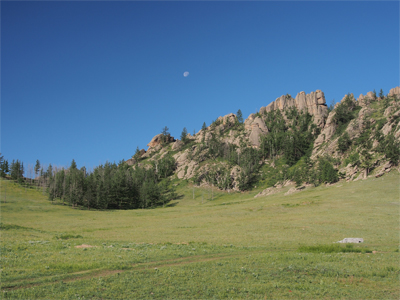
Moon setting behind our camp
|
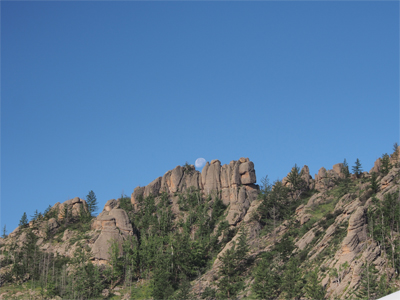
Moon setting behind our camp |
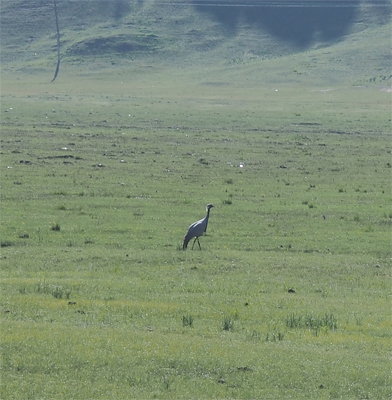
Demoiselle cranes
|
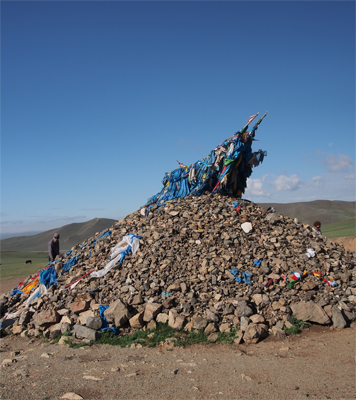
Marching three times around the Ovoo |
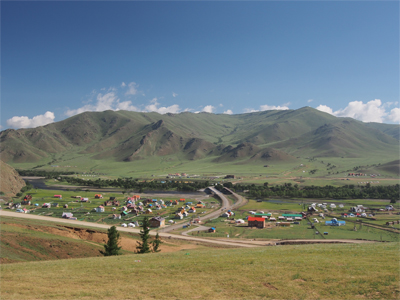
Looking back at the Gorkhi-Terelj National Park entrance and surrounding countryside
|
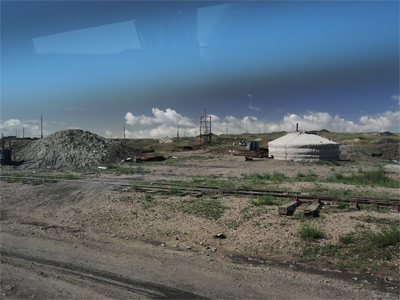
Coal mines |
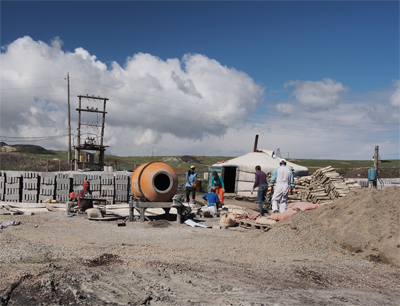
Making concrete blocks
|
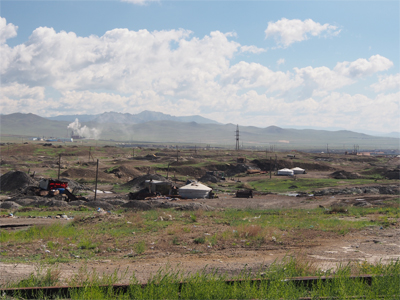
Coal mines |





































